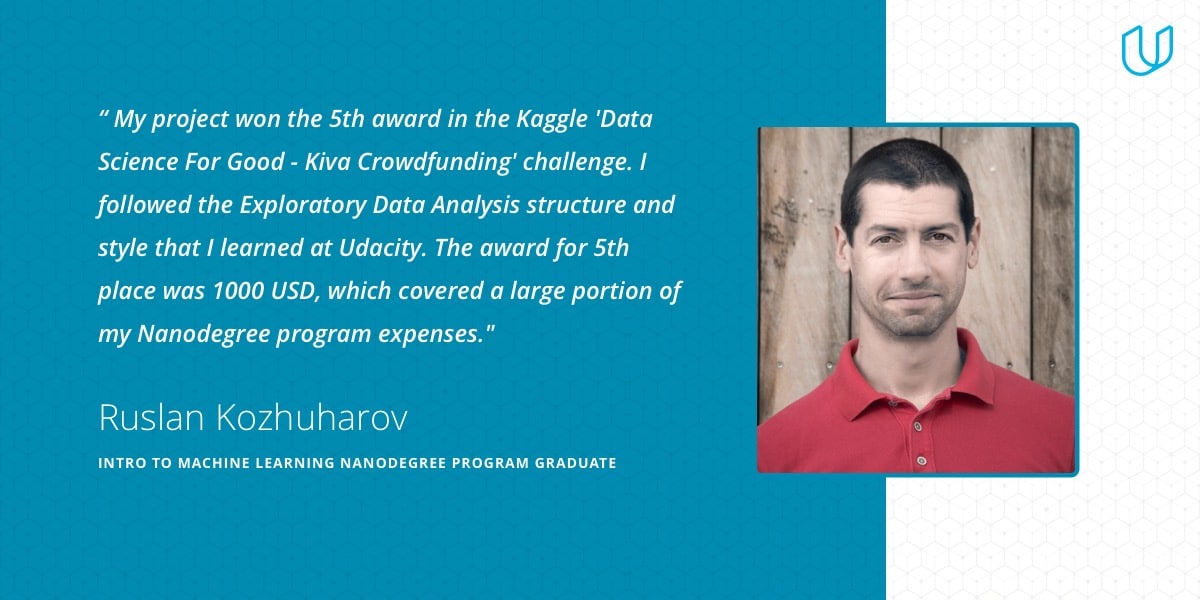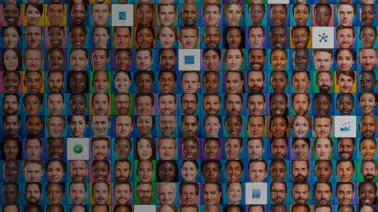Last week, we featured some of our Machine Learning graduates who changed their lives after graduating from the Intro to Machine Learning Nanodegree program. One of them was Ruslan Kozhuharov who mentioned how he got a job after completing the Nanodegree program and why he prefers to use TensorFlow in his everyday job.
Read further to know what he has to say about his Udacity experience.

– Tell us something about yourself.
I am Ruslan Kozhuharov. I am from Oslo. My educational background is in nuclear physics and engineering. Back at university, there was a subject called ‘Experiment Preparation And Processing Of Experimental Data.’ I didn’t realize it back then, but that was actually machine learning and exploratory data analysis. We learned mainly the mathematics behind linear algorithms. After I graduated I mostly worked in the fintech industry. I started programming in Python and at some point had to solve a complex problem with big financial implications. I decided to read Sebastian Raschka’s ‘Python Machine Learning’. I connected the dots back to what I learned in my university years and managed to solve the problem. That inspired me to start looking into other problems which could be solved with machine learning. I started playing with datasets on Kaggle and realized that my knowledge is not structured well and was incomplete. At that point I decided to go through the MLND program.
– What did you like the most about the Nanodegree program?
The content of the Machine Learning Nanodegree program was very well organized. The course material was both information rich and entertaining. The content creators were also very good presenters – especially Luis Serrano and Alexis Cook. The projects were particularly fun to work with.
– Your capstone project won an award at a Kaggle challenge. Tell us something about the project you did.
The Kaggle challenge was ‘Data Science For Good – Kiva Crowdfunding‘. In this challenge, we had to help a charity organization (Kiva) to focus their efforts where needed. Particularly, Kiva wanted to be able to identify the poverty levels in an area and stimulate the most underprivileged communities with interest free loans. I was very intrigued by this challenge because I wanted my work to have a positive impact on the World. I also felt that doing a good job at helping Kiva would potentially benefit thousands of people. Considering that such a benefit comes from about 100 hours of work by a single person is a really exciting prospect. I used a household survey dataset from the Philippines to estimate the poverty levels in various regions in that country. In my analysis, I followed the Exploratory Data Analysis structure and style that I learned at Udacity. My project won the 5th award in that challenge – this is what the challenge organizers wrote about my work: “This kernel uses a survey dataset we hadn’t seen before and provided careful analysis and clear, precise visualization, teaching us about the quality of targeting in Kiva’s biggest country and offering new ideas for how to use household surveys at the country level.” In addition, the award for 5th place was 1000 USD, which covered a large portion of my Nanodegree expenses.
– Soon after winning the contest, you landed a job as a Machine Learning Engineer. Tell us something about your interview experience.
My interview was a breeze, I had no issues explaining Machine Learning algorithms and I presented some projects of mine. I did land a job as a Lead Data Scientist for a consultancy firm in Oslo. This job allowed me to work on a broader range of projects. One of them was making a model for predicting pollen levels – when placed into an app this model could potentially help asthma and pollen allergy sufferers to prepare for days with high levels of pollen in the air.
– You said that you use TensorFlow at work and we have recently launched a new Nanodegree program called Intro to Machine Learning with TensorFlow. How do you see this considering the industry trends and demand?
One of the cool things about Udacity is that quick level of reaction to the industry trends. TensorFlow coupled with cloud computing seems to be becoming a very powerful combination, especially with the introduction of Tensorflow Transforms.
– Anything else you would like to add
Some of the most distinguished thinkers in our times like Yuval Noah Harari claim that we will be continuously reinventing ourselves in the future in order to stay relevant. I see Udacity as a very adequate answer to this challenge.



